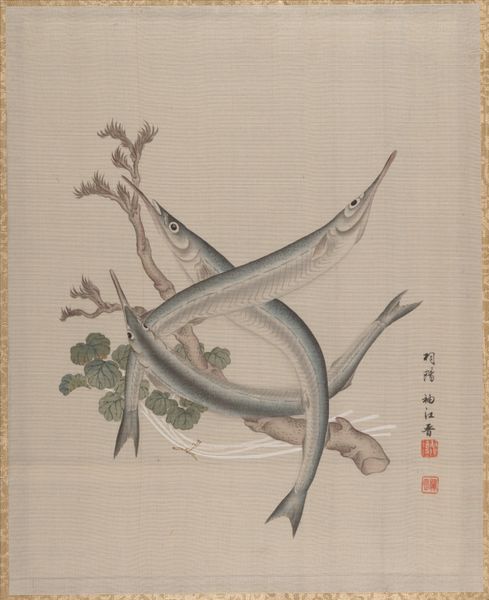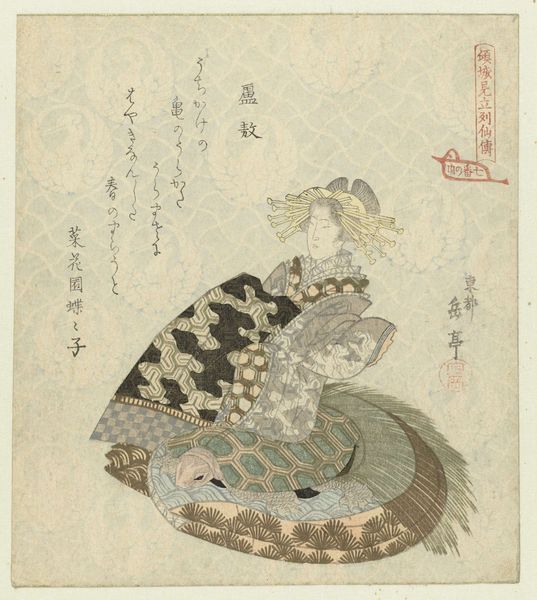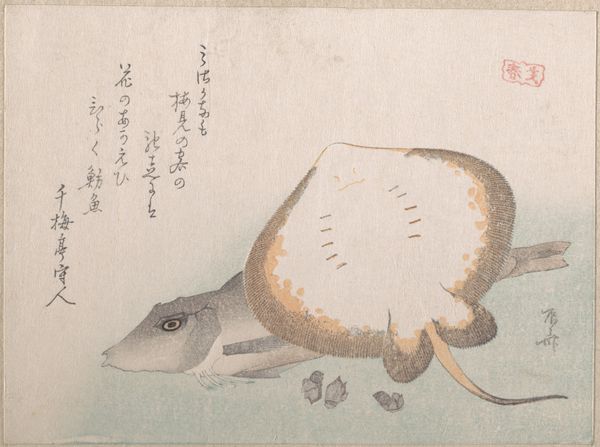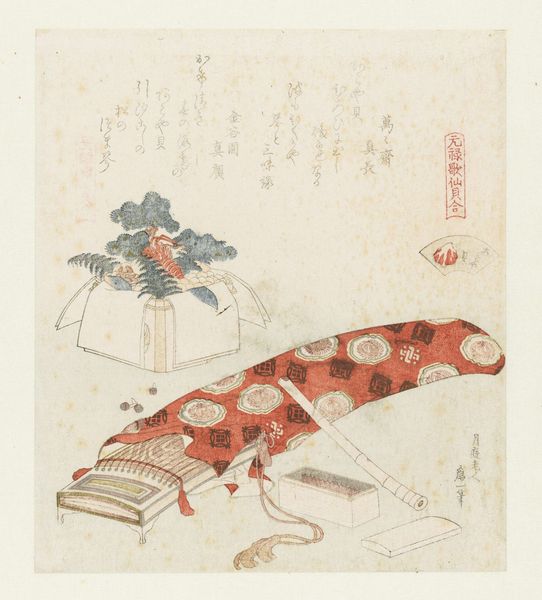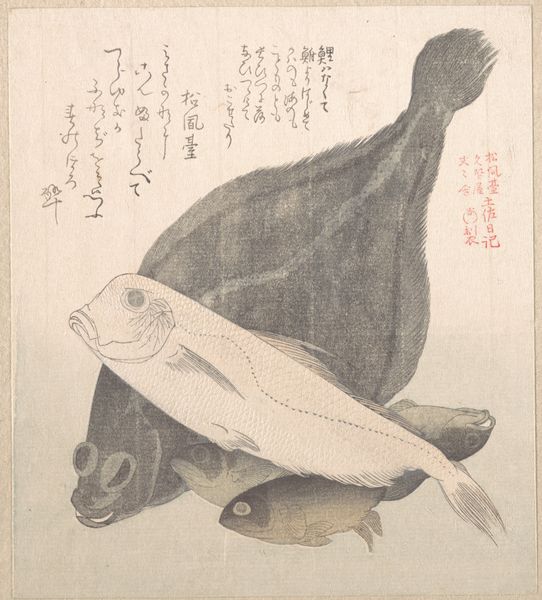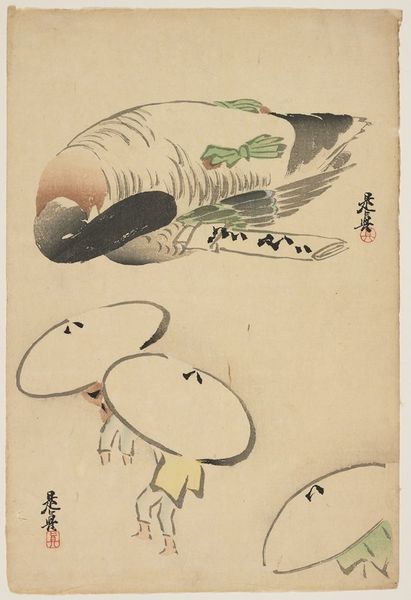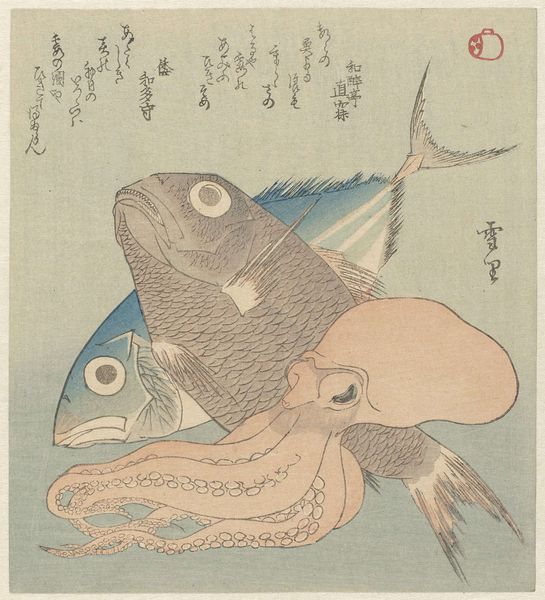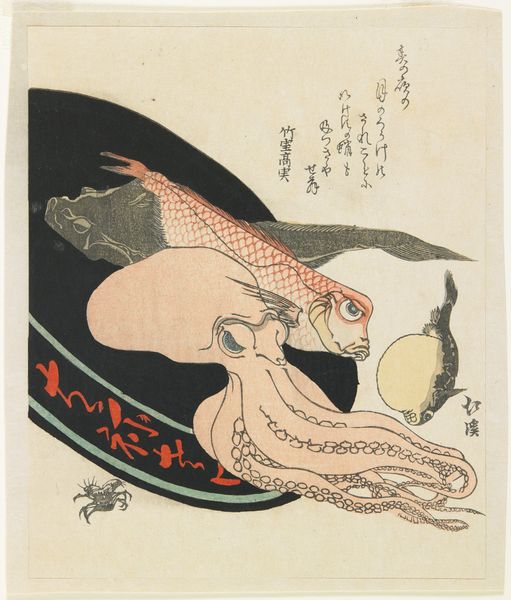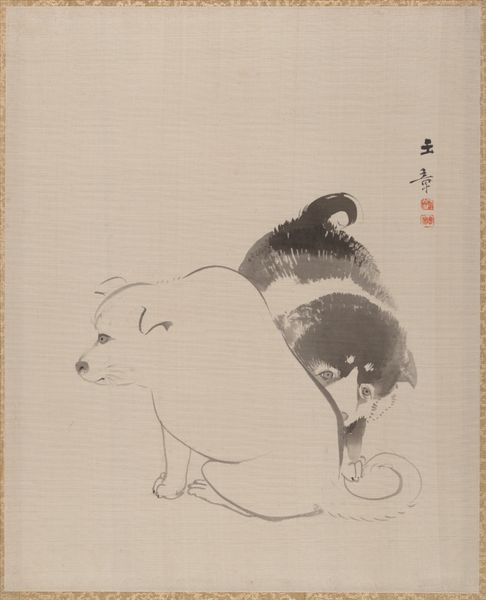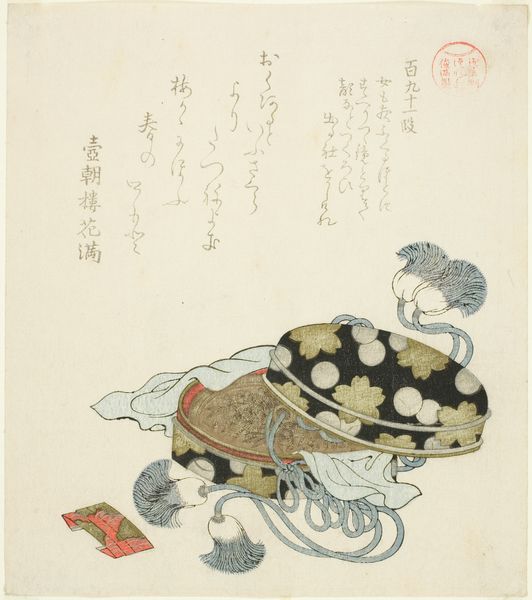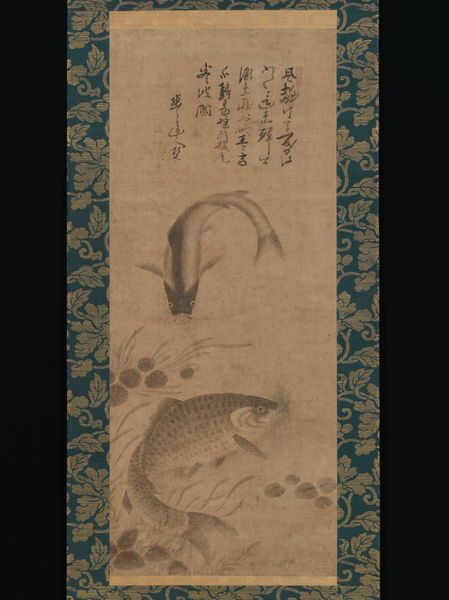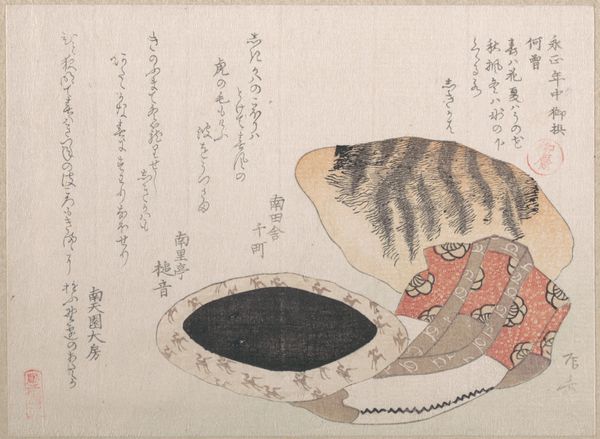
watercolor
#
toned paper
#
water colours
#
asian-art
#
watercolor
#
coloured pencil
#
watercolor
#
realism
Dimensions: 13 1/2 x 10 7/8 in. (34.3 x 27.6 cm)
Copyright: Public Domain
Curator: "Eels," a watercolor from 1890 to 1892 by Seki Shūkō, greets us. The delicate strokes on toned paper depict its subject with great care. Editor: My first thought is one of cool serenity. The muted tones, the understated composition. And is that, are those mushrooms with the eels? It’s so strange! Curator: Indeed. Shūkō’s rendering displays an engagement with naturalism filtered through artistic restraint. Note how he captures the subtle gradations of tone to suggest the eels' textures. Editor: Restraint, yes, but it also seems… practical. Watercolors on toned paper would've been relatively accessible. Were they readily available to artists, not just the elite, by the late 19th century? What did Shūkō have access to, and how did that influence this careful depiction? Curator: A valid consideration. The conscious choices of materiality absolutely impact how we read the image. The toned paper serves as more than just support; it actively participates in the color scheme, uniting elements harmoniously. Editor: Thinking about production… watercolor allows for precision, yet the toned paper might resist easy correction. Perhaps it’s the intersection of control and unpredictability that fascinates me. The labor involved to make something look so seemingly effortless is of interest. Curator: The lack of overt dramatic gesture speaks to a sensibility invested in the communicative power of nuanced composition. The eels intertwined…they embody an aesthetic ethos centered on quiet contemplation. Editor: And again, there are those mushrooms, punctuating an already unconventional depiction with another layer. Curator: True! The juxtaposition indeed challenges our preconceptions, imbuing everyday objects with newfound significance. A study in subtle contrast, visually and conceptually. Editor: Precisely, a reflection perhaps of society viewing simple commodities as being important aspects to consider for art as it evolves. Shūkō encourages new narratives centered on accessible materiality. Curator: The harmony suggests not just what’s represented but how seeing is a practice in and of itself, that attentive consideration itself provides profound insight. Editor: To see art in every part of life and maybe for others to replicate, by understanding its craft too.
Comments
No comments
Be the first to comment and join the conversation on the ultimate creative platform.
